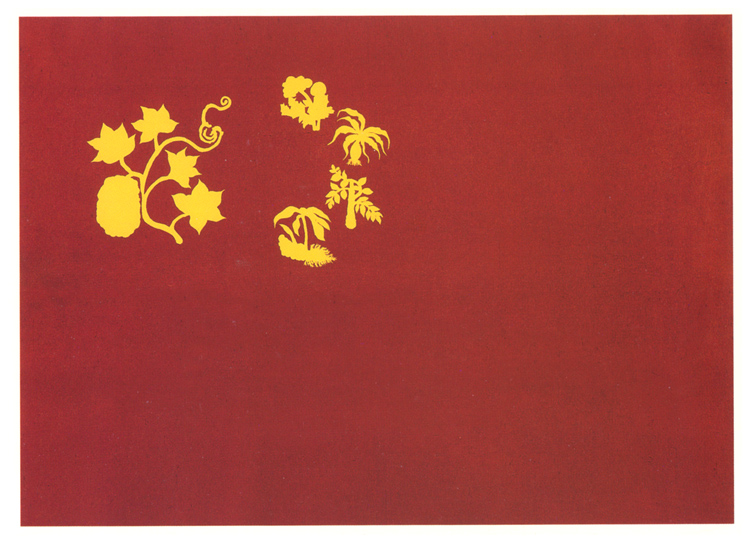
1996
woodcut on Ysai wood grain paper, printed by Vinalhaven Press
22 x 30 inches
edition of 30
The hard-liners of the Chinese political establishment often refer to banned cultural works as “poisonous weeds.” The student activists of the tragic Tiananmen Democracy movement of 1989 were influenced by such cultural musings.
The red ground and yellow images are the same color and proportions as the Chinese Communist flag. This flag is “re-starred” with silhouettes of plant forms derived from ancient woodcuts of the venerated Chinese materia medica. This response reminds officials that plants associated with toxic properties are also part of a long history of healing and economic/political struggle. The creed of constant revolution that is much admired may need the “weeds” to really get to the next step. This artwork is homage to the historic student and worker pro-democracy movement commonly viewed as an attempt to heal inequalities in Chinese society.
Starting from the left going clockwise the plants are:
Strychnos nux-vomica, Strychnine plant (Longaniaceae)
Papaver somniferum L., Opium Poppy (Papaveraceae)
Lycoris radiata, (Amarylliadaceae)
Croton tiglium L., (Euphorbiaceae)
Paris polyphylla, (Liliaceae)